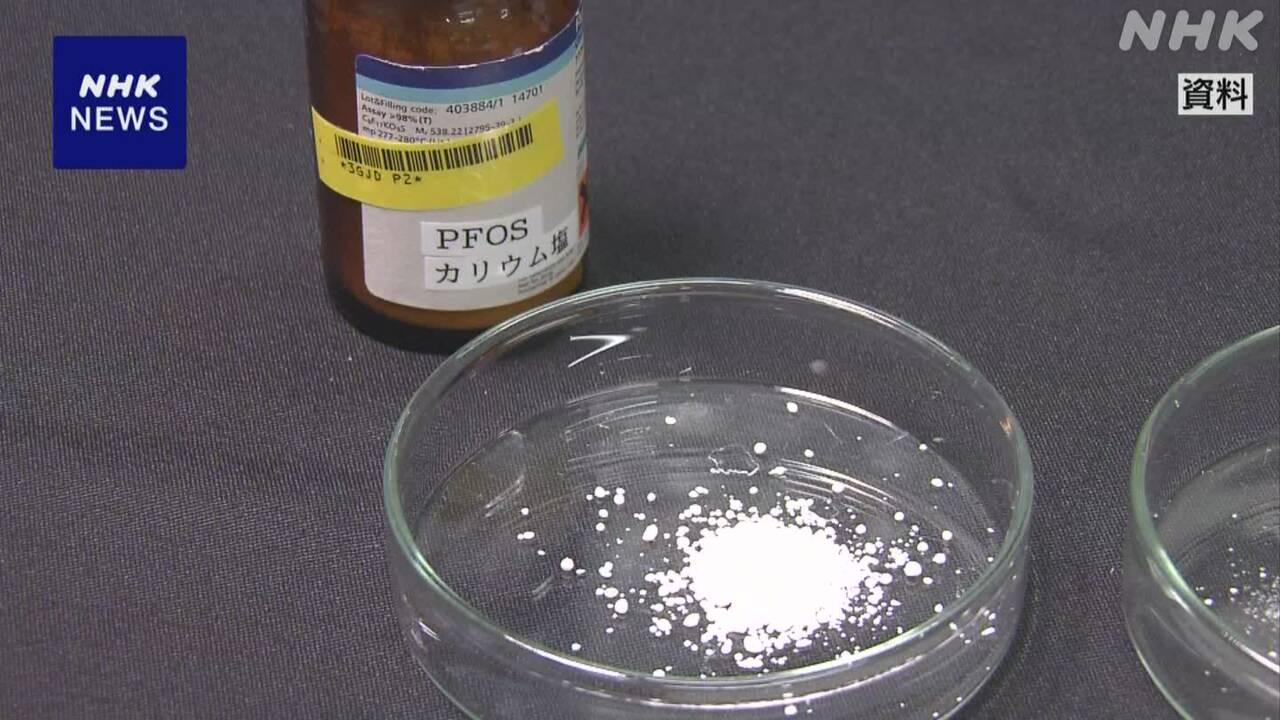A survey of the presence of PFAS, organic fluorine compounds, some of which are considered to be harmful, in underground water throughout Tokyo has been completed, and 21 local governments, or approximately one-third of the total, have detected It turns out that values exceeding the target value were detected.
"PFAS" is a general term for organic fluorine compounds, and among these, "PFOS" and "PFOA", which have been pointed out to be harmful, have been detected in high concentrations in rivers and tap water across Japan. The government has set a provisional target value of 50 nanograms per liter for water quality.
In order to alleviate the concerns of Tokyo residents, the Tokyo Metropolitan Environment Bureau has been conducting groundwater surveys throughout Tokyo, excluding island areas, since FY2021, but the survey has been carried out one year ahead of schedule and will be completed this month. I have finished my research.
According to officials, as a result of the survey so far, 21 local governments, or about one-third of all local governments in Tokyo, have detected values that exceed the country's provisional target values.
In the survey up until last year, 17 local governments had detected values exceeding the target value, but new cases have been detected in four local governments: Adachi Ward, Taito Ward, Hachioji City, and Kodaira City.
The Tokyo metropolitan government says that the virus has been detected in a wide area within Tokyo, and that it plans to conduct a survey on the same scale in the new fiscal year to understand the actual situation and consider future countermeasures.
Expert: “It is important to understand the actual situation and take measures.”
Regarding the results of the Tokyo metropolitan investigation, Associate Professor Koji Harada of Kyoto University Graduate School, who continues to research PFAS, said, ``We found that there may be multiple sources even within Tokyo. It has been used for the production of semiconductors, semiconductors, and fluororesins, so it is likely that some type of leakage occurred at the location where it was used."
On top of that, he added, ``It is desirable to find out what kind of sources are around the location where it was detected in groundwater, and to expand the investigation to surrounding locations. It is also necessary to check the history of use of PFAS, etc. with the cooperation of surrounding businesses.It is important to work with each local government to understand the actual situation and take measures toward countermeasures. '' he complained.
On the other hand, he said that high concentrations have not been detected in tap water in Tokyo, but said, ``People who use groundwater from wells need to be careful, and I want local governments to make this known.''
Tokyo metropolitan survey results
Since FY2021, the Tokyo Metropolitan Government has been conducting surveys throughout Tokyo, excluding island areas, to determine how much PFOS and PFOA are contained in groundwater.
In surveys up to last year, values exceeding the national government's provisional target values were detected in:
▼ Bunkyo Ward
▼ Ota Ward
▼ Shibuya Ward
▼ Nerima Ward
▼ Setagaya Ward
▼ Tachikawa City
▼ Musashino City
▼ Ome City
▼ Fuchu City ▼
Chofu
There were 17 municipalities:
Koganei City
,
Hino City
, Kokubunji City
, Kunitachi City
, Komae City
, Nishitokyo City , and Musashimurayama City.
The Tokyo Metropolitan Government originally planned to complete the survey by the end of next fiscal year, but in order to dispel the concerns of Tokyo residents, they conducted surveys at 136 locations this fiscal year and completed the survey one year early. .
As a result, values exceeding the target values were newly
detected in
▼Adachi Ward
, ▼Taito Ward
, ▼Hachioji City , and ▼Kodaira City.
In addition, we conducted additional surveys at Tachikawa City, Chofu City, and Hino City, which were consulted by local governments among the locations where we detected values exceeding the target values in previous surveys.
As a result, at the highest point in Tachikawa City, 620 nanograms per liter were detected, which is 12.4 times the target value.
The Tokyo metropolitan government has decided to continue conducting surveys in the new fiscal year and beyond at locations where values exceeding the target values have been detected, and will continue to monitor the situation.
Local governments in Tokyo are also taking their own measures.
Regarding ``PFAS'', in November last year, the World Health Organization's cancer research institute evaluated two types of ``PFOA'' and ``PFOS'', which have been pointed out to be harmful, as carcinogenic. However, until now, the government has maintained that scientific knowledge is insufficient and the clear impact on health is unknown.
However, due to growing concerns about PFAS in Japan, the Ministry of the Environment will commission three groups including universities to begin full-scale research in the new fiscal year to clarify the effects on health.
Under these circumstances, some local governments in Tokyo are taking their own measures.
In Musashino City, PFAS levels were investigated in the wells of 18 elementary and junior high schools in the city last June, and levels exceeding the national government's provisional target values were detected in seven of them.
Since the 18 schools serve as evacuation centers in the event of a disaster, and the water from the wells is expected to be used for drinking water, the city prepared water purifiers to remove PFAS.
In the event of a disaster, a pump is placed in a tank containing well water to purify it.
Daisho Sugita, director of the Musashino City Disaster Prevention Division, said, ``Even though we do water quality tests, we honestly don't know what kind of PFAS will be in the well water when we actually use it.'' , now everyone can drink water with peace of mind."
In addition, Tachikawa City and Chofu City conduct their own surveys of underground water, etc., separate from the metropolitan government's survey, and publish the results on their websites.

